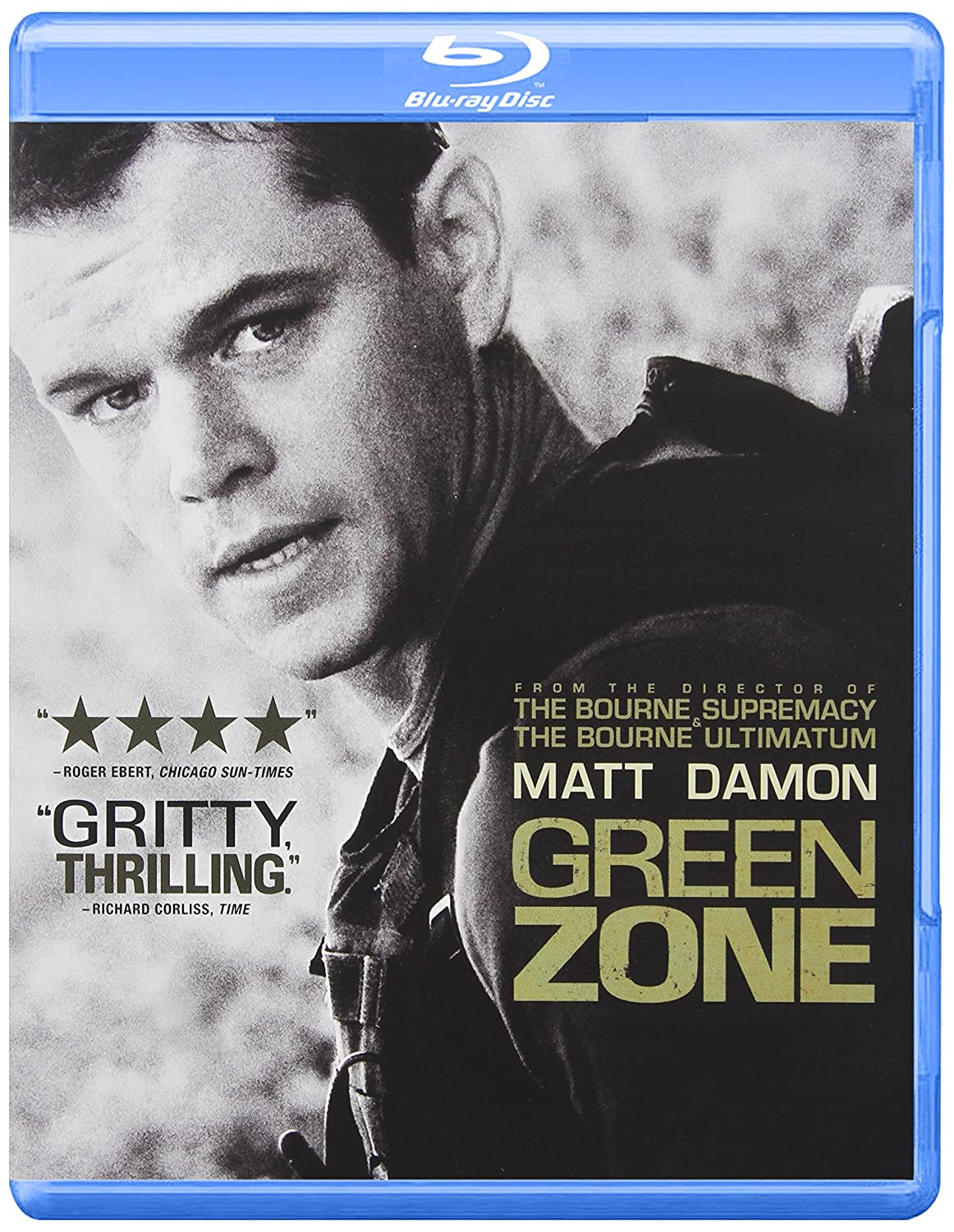
Title: Green Zone (2010)
Release Date: June 22, 2010
Format: Blu-ray Disc
Price: $14.98
On a production budget of around $100 million, but a domestic return of just over $35 million, no one would call the newest Paul Greengrass/Matt Damon collaboration, Green Zone (Universal, 2010) a hit… one might even call it a bomb (financially speaking), but this box office analysis does a disservice to a very good film that, unfortunately, serves two masters by attempting to be both an intriguing political thriller and a tough-as-nails war movie.
Worse yet, Green Zone finds itself grouped with other recent films that have centered on, or taking place during, the Iraq War. Films of that ilk typically find themselves without an audience, as if the subject was cursed. Come to think of it, the last film focused on Iraq that’s done well would probably be David O. Russell’s Three Kings, and that was about the first Iraq fun fest, not the second.
Greengrass, who previously paired up with Damon for the last two installments of the action-packed Jason Bourne Trilogy, nearly pulls off the pastiche between the two genres by carefully building up the murky political aspects of the 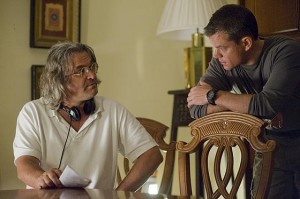 film’s first half, though they soon become overshadowed by the relentless Bourne-like pace of the film’s latter sequences. The rather pat denouement pulls back on the action in an attempt to close the film out as a rather high-minded critique on the role of journalism in regards to matters of war and peace, but by then the audience is still amped from the race-against-the-clock chase scenes and firefights, not to mention the impressive and fiery mid-air destruction of a helicopter, to be outraged.
film’s first half, though they soon become overshadowed by the relentless Bourne-like pace of the film’s latter sequences. The rather pat denouement pulls back on the action in an attempt to close the film out as a rather high-minded critique on the role of journalism in regards to matters of war and peace, but by then the audience is still amped from the race-against-the-clock chase scenes and firefights, not to mention the impressive and fiery mid-air destruction of a helicopter, to be outraged.
The unwitting troops on the ground in Iraq during the post-invasion fracases that led to the insurrection and broader Iraq War are also serving two masters as the film begins. On one hand there are the Neo-Conservative loyalists of the George W. Bush administration. Using misguided if not sham intelligence from dubious sources, they’ve launched a war on a sovereign nation and met success with a shock and awe campaign that utilized overwhelming force and technological superiority. As the initial military campaign drawing to a close, and prior to the insurgency and broader Iraqi War, the Bush administration assumed the rest would be a cake walk… simply a matter of winning hearts and minds away from Saddam Hussein and forming a provisional government headed by a sketchy Iranian exile (but run behind the scenes by Team Bush and the CIA, of course).
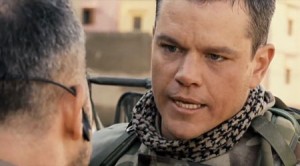 Meanwhile the CIA’s company crew in Iraq have other ideas for how best to control the post-war situation. They don’t trust the Neo-Cons to do more than act as a babysitting club, and are fully aware that the reasoning behind the invasion and occupation was based on gossamer evidence of WMDs (Weapons of Mass Destruction) at best, and at worst completely fabricated by Iraqi insiders wishing to see the Saddam’s Ba’athist party purged from both the government and their daily lives. For their sake, and the reputation of America’s intelligence services, finding WMDs becomes akin to finding the candlestick or the rope that murdered Mr. Boddy so the whole thing can be pinned on Professor Plum. Besides stitching together bickering and angry factions of Iraqis in the hopes of having a working government friendly to America’s Middle East interests, and besides the dawning awareness that it might be tougher to do than anyone thought, the biggest concern is attempting to keep the American public from figuring out the bigger scheme of things (control of Iraqi oil perhaps, or just settling old scores with a former asset and ally who probably knows too much), Team Bush and the CIA must find a way to justify the entire operation in a way the American public (and the world) can get behind and take comfort in.
Meanwhile the CIA’s company crew in Iraq have other ideas for how best to control the post-war situation. They don’t trust the Neo-Cons to do more than act as a babysitting club, and are fully aware that the reasoning behind the invasion and occupation was based on gossamer evidence of WMDs (Weapons of Mass Destruction) at best, and at worst completely fabricated by Iraqi insiders wishing to see the Saddam’s Ba’athist party purged from both the government and their daily lives. For their sake, and the reputation of America’s intelligence services, finding WMDs becomes akin to finding the candlestick or the rope that murdered Mr. Boddy so the whole thing can be pinned on Professor Plum. Besides stitching together bickering and angry factions of Iraqis in the hopes of having a working government friendly to America’s Middle East interests, and besides the dawning awareness that it might be tougher to do than anyone thought, the biggest concern is attempting to keep the American public from figuring out the bigger scheme of things (control of Iraqi oil perhaps, or just settling old scores with a former asset and ally who probably knows too much), Team Bush and the CIA must find a way to justify the entire operation in a way the American public (and the world) can get behind and take comfort in.
All this has now been fully documented, of course… pages from America’s tangled history of military filibustering and black operations. Pulling military resources and assets out of Afghanistan without finding Osama Bin Laden or achieving a sustainable success for the nation’s political future, leaving the Powell Doctrine for foreign wars in tatters, using the UN and Congress to justify a case for invasion just short of pushing ahead anyway, regardless of what anyone else thinks on the matter (and always the supposition that WMDs would be found and things would co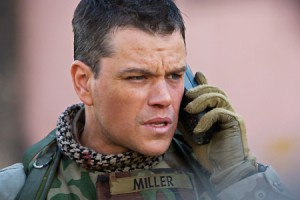 me full circle), Team Bush felt mighty confident that it was fighting another Good War and putting an end to a totalitarian regime on par with Hitler’s Nazis (and they were right to a point in that particular instance… Saddam was certainly no friend of democracy and, along with his sons and Ba’athist cronies, a curse on his own people and Iraq’s ethnic minorities). What wasn’t expected or anticipated by Team Bush was the lack of a cohesive vision to avoid civil strife among Islamic factions and the possibility of a power vacuum should their hand-picked Iraqi leadership not meet with success in forming an actual government.
me full circle), Team Bush felt mighty confident that it was fighting another Good War and putting an end to a totalitarian regime on par with Hitler’s Nazis (and they were right to a point in that particular instance… Saddam was certainly no friend of democracy and, along with his sons and Ba’athist cronies, a curse on his own people and Iraq’s ethnic minorities). What wasn’t expected or anticipated by Team Bush was the lack of a cohesive vision to avoid civil strife among Islamic factions and the possibility of a power vacuum should their hand-picked Iraqi leadership not meet with success in forming an actual government.
Green Zone takes place along this point in the Iraq War timeline. The film was inspired by, rather than based on, the 2006 non-fiction book, Imperial Life In the Emerald City by the Washington Post’s Rajiv Chandrasekaran. Green Zone plays as both a roman a clef about post-invasion Baghdad and a kind of whodunit where the great mystery is the lack of evidence pointing to Saddam’s alleged WMD facilities and stored weapons. As Chief Warrant Officer Roy Miller, Matt Damon does a supe rb job of portraying a citizen-solider with a sense of professionalism and leadership who is determined to figure out why, time-after-time, no weapons are found despite the intelligence he is given by his ranking officers. Though based on a real Iraq war vet, who later distance himself somewhat from the film’s message of a political conspiracy designed to push the U.S. toward war, Miller comes across as an everyman in Damon’s assured characterization.
rb job of portraying a citizen-solider with a sense of professionalism and leadership who is determined to figure out why, time-after-time, no weapons are found despite the intelligence he is given by his ranking officers. Though based on a real Iraq war vet, who later distance himself somewhat from the film’s message of a political conspiracy designed to push the U.S. toward war, Miller comes across as an everyman in Damon’s assured characterization.
The rest of the professional cast play thinly veiled composites of real-life participants in the Iraq War drama: Greg Kinnear is pitch perfect as Clark Poundstone (based on L. Paul Bremer, Chief Administrator of the Coalition Provisional Authority), a Bush apparatchik overseeing the post-Iraq reconstruction and the regime change, and the man who would ultimately and unwittingly help spark the Iraqi insurgency; B rendan Gleeson is a strangely comforting presence as CIA Bureau Chief Martin Brown (a composite of various CIA station agents and analysts as well as Jay Garner, the man tasked by the Bush Administration with bringing order to the immediate post-war chaos, and then summarily dismissed when he no longer agreed with Bremer and Team Bush)… Gleeson continues to do an steady job in his patented role as a disheveled, shambling father figure to lost boys, and here he guides Chief Miller along the path of discovery while using him to stay ahead of the neo-con curve. Of course, he butts heads with Poundstone over policy and jurisdiction, but his real job is to alert Miller to the possibility he’s on the right track, while also instructing the audience to the flawed philosop
rendan Gleeson is a strangely comforting presence as CIA Bureau Chief Martin Brown (a composite of various CIA station agents and analysts as well as Jay Garner, the man tasked by the Bush Administration with bringing order to the immediate post-war chaos, and then summarily dismissed when he no longer agreed with Bremer and Team Bush)… Gleeson continues to do an steady job in his patented role as a disheveled, shambling father figure to lost boys, and here he guides Chief Miller along the path of discovery while using him to stay ahead of the neo-con curve. Of course, he butts heads with Poundstone over policy and jurisdiction, but his real job is to alert Miller to the possibility he’s on the right track, while also instructing the audience to the flawed philosop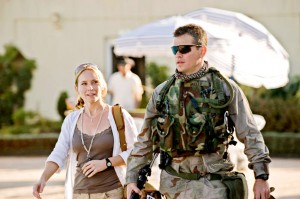 hy the Bush Doctrine and the post-war plans to “de-Ba’athify” the ranks of government officials, professionals, educators and others close to the recently deposed regime. Another key figure in the pre- and post-war drama is Lawrie Dayne (apparently Brian Helgeland had fun naming his characters) played by the lovely and dependable Amy Ryan, a journalist who, let’s face it, is a spin on Judith Miller, the real life New York Times journalist who was fed misinformation in order to lay the foundations for pre-emptive war and who never seemed to mind being a shill for the claims from Administration officials with secret sources. Last, but not least, for the Americans is the film’s black-hat villain… Poundstone’s Special Forces henchman, Major Briggs played by the versatile British actor, Jason Isaacs. Having just seen Isaacs command the small screen in the little seen BBC-America drama, The State Within (2006) where he played the British Ambassador to Washington (this TV production actually makes a good companion piece to Green Zone, though State is completely fictional), I was impressed by his performance in Green
hy the Bush Doctrine and the post-war plans to “de-Ba’athify” the ranks of government officials, professionals, educators and others close to the recently deposed regime. Another key figure in the pre- and post-war drama is Lawrie Dayne (apparently Brian Helgeland had fun naming his characters) played by the lovely and dependable Amy Ryan, a journalist who, let’s face it, is a spin on Judith Miller, the real life New York Times journalist who was fed misinformation in order to lay the foundations for pre-emptive war and who never seemed to mind being a shill for the claims from Administration officials with secret sources. Last, but not least, for the Americans is the film’s black-hat villain… Poundstone’s Special Forces henchman, Major Briggs played by the versatile British actor, Jason Isaacs. Having just seen Isaacs command the small screen in the little seen BBC-America drama, The State Within (2006) where he played the British Ambassador to Washington (this TV production actually makes a good companion piece to Green Zone, though State is completely fictional), I was impressed by his performance in Green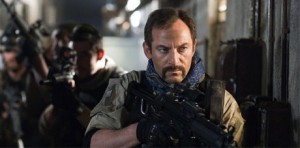 Zone. It’s a minor yet key role, and Isaacs, ever the chameleon as an actor, hides so well within the skin of Maj. Briggs that you can’t help but love to loath him while he does his wet work on behalf of Poundstone.
Zone. It’s a minor yet key role, and Isaacs, ever the chameleon as an actor, hides so well within the skin of Maj. Briggs that you can’t help but love to loath him while he does his wet work on behalf of Poundstone.
To portray the Iraqis, the filmmakers have chosen Israeli/Iraqi actor Yigal Naor to portray General Mohammed Al-Rawi (aka, the secret source of the bad intel, known by his codename “Magellan”) who we meet at the film’s start during the shock and awe bombing campaign. He thinks he understands the Americans and what they want in a post-Saddam power-structure, but he couldn’t be more wrong… A hunted man (later scenes attempting to find him through Iraq’s narrow streets and alleys easily recall the tense final reel of Carol Reed’s The Third Man), he is the “Jack of Clubs,” and the mission to find him becomes central to the film’s plot. He also comes with a convenient MacGuffin in the form of a book that holds cryptic information on all the safe-houses where Saddam’s men may be hiding… a crucial piece of evidence that everyone wants to get their hands on. 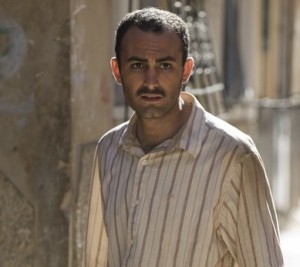 Yet another key role, the composite character of “Freddie” is played brilliantly by a British actor with Egyptian roots that Greengrass has relied on prior in the tragic United 93: Khalid Abdalla. Mr. Abdalla is remarkable in the role, bringing a simmering level of rage slowly to the surface as a man who walks between two worlds as war-weary Iraqi citizen who holds a deep-seated grudge against the Ba’athist regime and a man who is interested in helping the Americans (Miller “hires” him as a translator), but only insofar as they help Iraq by killing men like Al-Rawi. Abdalla’s key scene with Matt Damon, performed as he hops about on one leg (the other having been lost during the Iran-Iraq War), is both humorous and tragic, swinging from the depths of despair to acceptance of the American mission.
Yet another key role, the composite character of “Freddie” is played brilliantly by a British actor with Egyptian roots that Greengrass has relied on prior in the tragic United 93: Khalid Abdalla. Mr. Abdalla is remarkable in the role, bringing a simmering level of rage slowly to the surface as a man who walks between two worlds as war-weary Iraqi citizen who holds a deep-seated grudge against the Ba’athist regime and a man who is interested in helping the Americans (Miller “hires” him as a translator), but only insofar as they help Iraq by killing men like Al-Rawi. Abdalla’s key scene with Matt Damon, performed as he hops about on one leg (the other having been lost during the Iran-Iraq War), is both humorous and tragic, swinging from the depths of despair to acceptance of the American mission.
While the performances are a highlight of Green Zone, with Damon and Abdalla doing top-notch work, the other star of the show is the frenetic hand-held camera work by Barry Ackroyd, who previously worked with Greengrass on United 93 and has already done a tour in Iraq via Kathryn Bigelow’s The Hurt Locker. The hand-held technique, now so firmly entrenched in American movies that it’s sometimes strange to see a movie filmed with a locked-down camera, is appropriate to the pace Greengrass maintains throughout, but especially toward the end when chaos threatens to break during the search for Al-Rawi.
While not a particularly complex film, and hardly plot heavy for a political thriller, Green Zone does demand some attention beyond the slam-bang action set pieces, and while it’s not essential to know the true story of what went down in the Green Zone of Baghdad (Paul Bremer’s policy of de-Ba’athification is covered, as is a scene where the rival Iraqi factions argue over who will wield control and power in the new Iraq… which is very reminiscent of a similar scene in David Lean’s classic Lawrence of Arabia) it helps one to understand who’s who among the characters as well as the timeline of events. Nevertheless, the movie works purely as an intense action film if that’s all one wants from Greengrass and company. I enjoyed it, but as a political thriller based on fact, it’s no All the President’s Men nor is it as good in that regard as other more fanciful political thrillers from the past such Three Days of the Condor. Nevertheless, the film did not deserve to be ignored by audiences, which probably has much to do with the fact it’s classified as an Iraq War movie. With other films in this cinematic ghetto being unappreciated and little seen (The Kingdom, Stop-Loss, In the Valley of Elah, Redacted, et. al. Even the Academy Award-winning The Hurt Locker had trouble finding audiences despite great reviews and the cachet of Oscar), it’s easy to see why the film was not a big hit during its theatrical run. Taken with that attitude, however, you’d miss out on some terrific performances and the continued collaboration between Greengrass and Damon, a mix of personalities and talent that I think works extremely well, whether in a Bourne-specific film or not. Speaking of those highly-regarded spy-thrillers, Green Zone seems to be hidden in the shadows of those prior Greengrass/Damon works, and that’s also a shame. Green Zone can certainly stand on its own as a very good thriller with lots of action elements, and though it won’t keep you guessing much, and the thrills mainly come from the intense action, it’s still quite an achievement.
not deserve to be ignored by audiences, which probably has much to do with the fact it’s classified as an Iraq War movie. With other films in this cinematic ghetto being unappreciated and little seen (The Kingdom, Stop-Loss, In the Valley of Elah, Redacted, et. al. Even the Academy Award-winning The Hurt Locker had trouble finding audiences despite great reviews and the cachet of Oscar), it’s easy to see why the film was not a big hit during its theatrical run. Taken with that attitude, however, you’d miss out on some terrific performances and the continued collaboration between Greengrass and Damon, a mix of personalities and talent that I think works extremely well, whether in a Bourne-specific film or not. Speaking of those highly-regarded spy-thrillers, Green Zone seems to be hidden in the shadows of those prior Greengrass/Damon works, and that’s also a shame. Green Zone can certainly stand on its own as a very good thriller with lots of action elements, and though it won’t keep you guessing much, and the thrills mainly come from the intense action, it’s still quite an achievement.
Things to notice:
- The opening sequence… shock and awesome! Greengrass puts you in the shit during the aerial bombardment and it’s stunning… both the sound and visual fury of this section are jaw-dropping, and yet, Greengrass still manages to impart vital information, set-up the film’s plot and introduce some crucial players.
- The short, sharp, shock of the sniper take-down… Nothing at all like the excruciating scenes in Kubrick’s Full Metal Jacket, yet just as brutal and disturbing (this time, superior firepower makes the take-down a LOT shorter). This is where Greengrass grabs you by the throat after that stunner of an opening sequence only to pull the rug out from under us when the WMDs these guys risked their lives for can’t be found… just empty warehouses and rusty, old equipment.
- The fact that the film was shot in Spain and Morocco, but looks for all the world like the Baghdad seen repeatedly on 24-hours news networks. The digital art necessary to bring Baghdad to life is extraordinary and seamless. We get some amazing flyover establishing shots that you’d swear were really filmed on location in the Green Zone itself… the iconic Swords of Qādisīyah (Hands of Victory) are there, the Republican Palace, mosques and other architectural landmarks are there and all are well-represented and photo-realistic whether in bright sunlight or murky darkness.
- Damon’s key scene during the WMD briefing where he claims all his guys did was “roll a donut” on finding actual weapons or traces of them regardless of where the intel has them look. Damon projects a commanding and intelligent demeanor, but knows when to back off from being respectfully skeptical when his commanding officers take him down a notch. Damon handles the transition well, allowing us to gain both information and sympathize with his character as we start going down the rabbit hole with him.
- The Green Zone itself… Well represented in set design flourishes (check out the “Saddam the Warrior” heads atop the palace. A CGI trick or actual set design, you be the judge), the production design is top-notch and lends complete realism to every sequence.
- Another design standout is the laid-back atmosphere at the Al-Rashid hotel. The scene when Miller’s troops visit the hotel while he goes searching for Marty Brown is a virtual oasis amidst the Baghdad wasteland. It’s a study in contrasts… while troops are getting their asses shot off, the hoi polloi of CIA personnel, neo-cons and journalists are living it up poolside with Domino’s pizza, beer and a bevy of lovely, bathing-suit clad beauties. This scene reminds me of a similar, but more humorous, one in Oliver Stone’s Salvador when James Wood’s sleazy photojournalist attempts to glean information from the same type of characters living it up in relative safety with the comforts of home while those they seek to protect face a wretched, uncertain future.
- Bush’s infamous “Mission Accomplished” speech on TV playing in the background… a small jab perhaps, but one the filmmakers have kept in the background of one scene. Take from it what you will, is all Greengrass is saying here. The man refuses to beat his audience over the head with the message. Nicely done.
- Damon’s easy approach to military jargon and language… he seems rooted in reality and not just the film’s reality. Also, Greengrass’s wise choice in using actual Iraq vets for supporting characters and extras. The authenticity of certain scenes (the sniper quickly being taken toward at the beginning of the film, their interrogations of the local Iraqis, the way they confront Miller over some of his decisions) is due to these non-pros and their first-hand experiences.
- The violence in the film is quick and ugly but rarely dwelt upon for longer than need be. Rather, I found myself growing uncomfortable from actual suspense during moments when information must be negotiated via interrogation. Some of the violence stems from cultural confusion, and the feeling is very authentic… certainly gets the heart going.
- The score by John Powell is a percussive, string-based work that keeps the pulse pounding, ratcheting up the excitement without being bombastic or overdone… it’s a great piece of work for this particular film.
The film is worth seeing, no doubt about it… give it a chance, regardless of how you feel about the Iraq war or Iraq war movies and I doubt you’ll be disappointed.
That said, the Blu-ray is a strong release by Universal, considering it could have easily been dumped, with a gorgeous AVC MPEG-4 transfer in 1080p/2.40:1 widescreen. The thing is, you may have trouble realizing how great it looks because of the quasi-documentary style that Greengrass and Ackroyd use to tell the story. I’m finding this to be the case with many Blu-ray releases where the filmmakers appropriated a style that mixes film and digital video, or has been toyed with in post. Whether a film like Natural Born Killers (at the extreme) or Traffic or Green Zone, it’s getting hard to tell if there are issues with the BD when the filmmaker’s purposefully use shots filmed with heavy grain stock or grain due to lighting 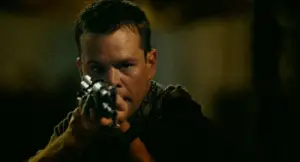 conditions. All the out-of-focus handheld work or other tricks of the trade that give the viewer a “you-are-there” feel sometimes make it difficult to discern flaws for a high-def transfer. Yet, Green Zone, for all the grain apparent in some scenes (and there is a lot of it during dark indoor and nighttime scenes), and washed out look of the film on the whole, the BD offers a solid image that best represents what Greengrass and crew shot for theatrical exhibition. If you find fault with it, you’re finding fault with the director himself in this instance. Needless to say, the high contrast during some scenes, muddy black levels full o’ grain and washed-out colors do lend the film a gritty, documentary look that HD won’t make look any prettier, though the daytime scenes of Baghdad, with helicopters flying in from right to left, and troops working on tarmacs and around the Green Zone area look superb… One flyover in particular uses lens flare in a way that just made me wanna weep it was so gracefully done… and that looked terrific on Blu-ray.
conditions. All the out-of-focus handheld work or other tricks of the trade that give the viewer a “you-are-there” feel sometimes make it difficult to discern flaws for a high-def transfer. Yet, Green Zone, for all the grain apparent in some scenes (and there is a lot of it during dark indoor and nighttime scenes), and washed out look of the film on the whole, the BD offers a solid image that best represents what Greengrass and crew shot for theatrical exhibition. If you find fault with it, you’re finding fault with the director himself in this instance. Needless to say, the high contrast during some scenes, muddy black levels full o’ grain and washed-out colors do lend the film a gritty, documentary look that HD won’t make look any prettier, though the daytime scenes of Baghdad, with helicopters flying in from right to left, and troops working on tarmacs and around the Green Zone area look superb… One flyover in particular uses lens flare in a way that just made me wanna weep it was so gracefully done… and that looked terrific on Blu-ray.
Where the BD really comes through is on sound. I’d expect nothing less for a film like this, and that opening shock and awe sequences is so ear-shattering impressive that you’ll feel it in your bones (the disc is enabled for D-Box, so those of you with the jiggly Barcaloungers can really experience that Sensurround effect). The DTS-HD MA 5.1 mix in English (DTS 5.1 for French and Spanish) uses the multi-channel and LFE so well you feel as if your house will break into pieces and come raining down on you. Dialogue is clear, but sometimes the music does overshadow things during the chase scenes at the end, drowning out some ambient effects. Overall, it’s a terrific audio experience, and one reason to snap the Blu-ray up for your home theater library. While Greengrass gives the film a visually immersive feel, the audio mix compliments it with a feeling of being dropped into utter chaos… it’s frighteningly effective.
Subtitles are in English SDH, French and Spanish, and there is a descriptive audio track as well.
Universal did not scrimp on extras for the disc, no matter how well it did in theaters, and that’s appropriate considering the powerhouse talent involved. Still, it’s quite meager compared to other BD’s recently released, but I suppose just perfect enough for this release.
First some criticism that has nothing to do with the film itself or the transfer:
From the opening Universal logo you’ll get a barrage of ads (aka trailers, though one is for the PocketBlu mobile feature). The minute the disc resolves itself in the player, they begin in earnest. You can skip over ‘em, but it takes a while and is 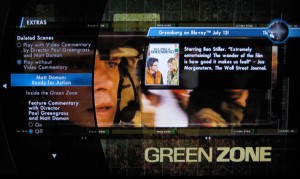 kind of a drag. Now sure, just about every disc whether DVD or Blu-ray does this, and in a huge step from the days of VHS you can easily skip them… this seems like a rather empty complaint. But now there are more of them it seems… and they’re harder to get through without the disc often stopping completely forcing a re-start. Perhaps that’s a glitch of this particular BD, but I’m noticing it more and more… The studios have our attention, and they mean to abuse it. There’s different ads each time you load the disc, courtesy of BD-Live capability, but I don’t really have to be on a need to know basis every time I insert the frickin’ disc… it’s annoying as hell. Add to that the “ticker” that Universal has added to the menu, and some of the luster is off this Blu-ray suddenly. It’s not a big, huge deal, since it can be toggled on/off, but I found it to be irritating. The ticker, a digital crawl much like the sort that appears on ESPN or MSNBC, offers current information (again, tied to the BD-Live Internet capability) about upcoming and current theatrical releases and video offerings. During the course of one viewing, I caught trailers for The Wolfman, Greenberg, and other films that, at the moment, I could care less about. PocketBLU seems like an interesting feature, but honesty, when I pop in a disc, I just wanna skip to the movie. Maybe that’s just me. In any case, expect to be advertised to ad nauseum. I’ve rarely seen any BD’s do this with such gusto and I’ll go on record as disliking it.
kind of a drag. Now sure, just about every disc whether DVD or Blu-ray does this, and in a huge step from the days of VHS you can easily skip them… this seems like a rather empty complaint. But now there are more of them it seems… and they’re harder to get through without the disc often stopping completely forcing a re-start. Perhaps that’s a glitch of this particular BD, but I’m noticing it more and more… The studios have our attention, and they mean to abuse it. There’s different ads each time you load the disc, courtesy of BD-Live capability, but I don’t really have to be on a need to know basis every time I insert the frickin’ disc… it’s annoying as hell. Add to that the “ticker” that Universal has added to the menu, and some of the luster is off this Blu-ray suddenly. It’s not a big, huge deal, since it can be toggled on/off, but I found it to be irritating. The ticker, a digital crawl much like the sort that appears on ESPN or MSNBC, offers current information (again, tied to the BD-Live Internet capability) about upcoming and current theatrical releases and video offerings. During the course of one viewing, I caught trailers for The Wolfman, Greenberg, and other films that, at the moment, I could care less about. PocketBLU seems like an interesting feature, but honesty, when I pop in a disc, I just wanna skip to the movie. Maybe that’s just me. In any case, expect to be advertised to ad nauseum. I’ve rarely seen any BD’s do this with such gusto and I’ll go on record as disliking it.
The other petty annoyance is the incre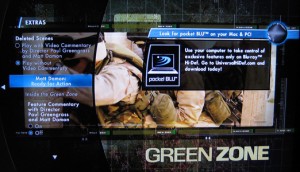 asing marriage of Blu-ray and social networks. I expect that film fans far younger than I will appreciate this, but I find it to be another annoying distraction. Can’t we just WATCH a film any longer… you know, sit still for about two-ish hours and enjoy a story without additional geegaws and crap to fill up the time? Other extras of limited value: My Scene bookmarking and the previously mentioned PocketBLU which allows you to use a smart phone as a Social BLU device to discuss the film on Facebook or watch deleted or extended scenes. From my perspective, if you’re using Social BLU on a mobile phone, you’re probably not watching the darn movie anyway (they discourage this kind of thing in actual movie theaters, ironically). I mean, whatever… smart phones and social networks are definitely in vogue, so I can see why Universal’s doing this, but honestly I watch movies to escape the realities of mobile contact and social networks for a few hours. Just sayin’.
asing marriage of Blu-ray and social networks. I expect that film fans far younger than I will appreciate this, but I find it to be another annoying distraction. Can’t we just WATCH a film any longer… you know, sit still for about two-ish hours and enjoy a story without additional geegaws and crap to fill up the time? Other extras of limited value: My Scene bookmarking and the previously mentioned PocketBLU which allows you to use a smart phone as a Social BLU device to discuss the film on Facebook or watch deleted or extended scenes. From my perspective, if you’re using Social BLU on a mobile phone, you’re probably not watching the darn movie anyway (they discourage this kind of thing in actual movie theaters, ironically). I mean, whatever… smart phones and social networks are definitely in vogue, so I can see why Universal’s doing this, but honestly I watch movies to escape the realities of mobile contact and social networks for a few hours. Just sayin’.
Now on to the goodies… including a pretty terrific audio commentary track with Paul Greengrass and Matt Damon that demonstrates their affinity for each other as artists and actually ads value to the film. We get to know their motivations for making the film, their experiences along the way, and their own feelings on the film’s politics and real-life wartime events. Definitely worth a listen.
Deleted scenes are offered with a video commentary by Damon, Greengrass and Kit Greengrass, Paul’s young son. Essentially, they’re watching the various deleted scenes (or, as Damon deadpans, “scenes that your Dad screwed up, kid.”) as Greengrass explains why they were cut… mainly for not pushing the story forward or not adding to the thriller pace. The scenes do seem like good candidates for the cutting room floor for exactly Greengrass’s reasons; however, they’re not without value as they give insight into Miller dealing with the intricacies of Iraqi hearts and minds, the political and ethical confusion of Miller faces, as well as the beginnings of the insurrection (featuring a nicely paced car bomb scene show before “flame augmentation” effects were added). Damon comes across as a thoughtful actor who doesn’t mind passing on small details such as how he achieved Miller’s commanding voice by screaming himself hoarse each day of the shoot and learning the lingo from the extras. He obviously has a producer’s eye toward what works for maximum storytelling efficiency and he’s not one to fall in love with his own scenes just because he gave a good performance. Both he and Greengrass praise the collaborative process of filmmaking and each other… but don’t mind the mutual appreciation society feel of it, because that friendship is at the heart of their work thus far. The deleted scenes contain:
as Greengrass explains why they were cut… mainly for not pushing the story forward or not adding to the thriller pace. The scenes do seem like good candidates for the cutting room floor for exactly Greengrass’s reasons; however, they’re not without value as they give insight into Miller dealing with the intricacies of Iraqi hearts and minds, the political and ethical confusion of Miller faces, as well as the beginnings of the insurrection (featuring a nicely paced car bomb scene show before “flame augmentation” effects were added). Damon comes across as a thoughtful actor who doesn’t mind passing on small details such as how he achieved Miller’s commanding voice by screaming himself hoarse each day of the shoot and learning the lingo from the extras. He obviously has a producer’s eye toward what works for maximum storytelling efficiency and he’s not one to fall in love with his own scenes just because he gave a good performance. Both he and Greengrass praise the collaborative process of filmmaking and each other… but don’t mind the mutual appreciation society feel of it, because that friendship is at the heart of their work thus far. The deleted scenes contain:
- Met D Dig For WMD at Tikrit University — a short scene showing another waste of time and resources in order to find old paint cans amidst an extensive excavation. No WMDs here, move along, move along.
- Mukhabarat Headquarters — A heavy scene where Iraqis are show going through Ba’athist government files and Zubaidi (the Ahmed Chalabi composite) gets a tour of torture chambers courtesy of Poundstone. Suddenly, Miller’s group rolls into the area and witnesses the looting of files (that may hold possible clues to WMDs) and quickly find themselves in a short skirmish that gets them a good ass-kicking by a commanding officer and Poundstone.
- Mosque Explosion and Returning Hamza’s Body — The final prayers are intoned as members of Saddam’s old guard complete their rites and head out of a mosque only to be killed when a car bomb explodes. After catching and losing (to American Special Forces) one Ayad Hamza, a subordinate of Al-Rawi’s, Miller and Freddie make a mad dash to find him, but too late… Soon they must bring Hamza’s body to his widow in a tempestuous scene that critiques the cultural class divisions of the newly deposed Iraqi elite and give Miller further clues into his own government’s duplicity and false-flag motivations.
- Poundstone and Zubaidi Discuss the Plan — Featuring an establishing shot of the terrific set design that truly makes it feel like post-invasion Baghdad, this scene quickly moves to a Godfather-esque dark meeting room where Poundstone keeps Zubaidi in line with promises of support for his political future, as well as plans for rebuilding according to US wants and needs (mainly oil).
U-Control Special Features:
With U-Control, you’ll get a choice of either video commentary with Greengrass and Damon or an elaborate PnP that 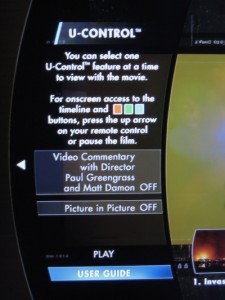 offers an EPK-styled look at the on-set production. A little “U” watermark graphic appears in the lower right corner. You can toggle between the two feature settings, but it can get a little confusing to decide which to watch and listen to (PnP volume control is found in the Setup section of the main menu). The PnP feature offers lot of on-set looks at cameras being hauled, hand held, pushed and shoved to get the gritty look of Baghdad’s desert streets. While both features are generally synced to the movie and scene specific, I found myself frequently having to back up the to catch the beginning of each commentary or PnP segment, and though they’re informative, I find the
offers an EPK-styled look at the on-set production. A little “U” watermark graphic appears in the lower right corner. You can toggle between the two feature settings, but it can get a little confusing to decide which to watch and listen to (PnP volume control is found in the Setup section of the main menu). The PnP feature offers lot of on-set looks at cameras being hauled, hand held, pushed and shoved to get the gritty look of Baghdad’s desert streets. While both features are generally synced to the movie and scene specific, I found myself frequently having to back up the to catch the beginning of each commentary or PnP segment, and though they’re informative, I find the 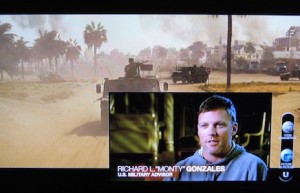 format of these features frustrating to use unless you commit to one or the other. Though these features contain interesting and even crucial details toward understanding the filmmakers’ motivation and technical strategies, it’s hard to get into them and enjoy. They would be better served by being separate, stand-alone segments of the feature section. The feature commentary can be played over the film without the visuals, and though you’ll see some of the behind-the-scenes activity on the video commentary feature, the PnP content offers a much more thorough look at the production showing Greengrass working with his actors, the DP’s crew hustling to get the right shot, and the actors and many non-pros (most of them veterans of Desert Storm and various phases of the more recent Iraq conflict) as they react and muse upon the cinematic endeavor and the surreal aspects of re-creating Baghdad under siege during the American occupation. It’s really interesting stuff, and worth a look no matter which feature you choose to watch along with the movie.
format of these features frustrating to use unless you commit to one or the other. Though these features contain interesting and even crucial details toward understanding the filmmakers’ motivation and technical strategies, it’s hard to get into them and enjoy. They would be better served by being separate, stand-alone segments of the feature section. The feature commentary can be played over the film without the visuals, and though you’ll see some of the behind-the-scenes activity on the video commentary feature, the PnP content offers a much more thorough look at the production showing Greengrass working with his actors, the DP’s crew hustling to get the right shot, and the actors and many non-pros (most of them veterans of Desert Storm and various phases of the more recent Iraq conflict) as they react and muse upon the cinematic endeavor and the surreal aspects of re-creating Baghdad under siege during the American occupation. It’s really interesting stuff, and worth a look no matter which feature you choose to watch along with the movie.
Other Special Features:
Matt Damon: Ready for Action: Though it sounds like something out of Boogie Nights this featurette (with content that can be glimpsed during the PnP U-Control feature) relates how Damon worked, interacted and commanded his team of non-pro vets, in turn becoming their Chief and gaining their respect. We also get an understanding of his commitment to authenticity and his collaboration with his fellow actors when he discusses the basis for his character as well as his quest to create a realistic, sympathetic portrayal of a military professional coming to terms with the shenanigans of the Bush loyalists and an inept intelligence agency.
Inside the Green Zone: An EPK carved from the more extensive PnP feature that covers the production in summary fashion. Most of this is good stuff, but if you’ve seen the movie, you don’t need to be sold on it after-the-fact. Damon and Greengrass do have a cute mutual appreciation society thing going on, and you can tell they truly enjoy working with each other… and will probably continue to do so.
What Else?
- What’s New: BD-Live Trailers
- How-to Blu-ray User Guide
- My Scenes Bookmarks
- Digital Copy (disc) for use on computers and mobile devices
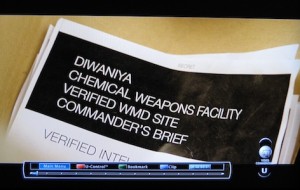 In the final analysis, Green Zone is a top-notch film with an interesting political thriller edge, though the action and chase sequences get the most attention. While The Hurt Locker eschewed criticism of the war, and focused on characters in tense situations, Green Zone allows that the chaotic politics and general disarray in post-war Iraq was exacerbated by American overseers who really thought they had a handle on the whole thing. While it’s not quite in Michael Moore territory as far as criticism of Team Bush goes, the thriller aspects derived from a political conspiracy may bother some on the Right (and please a few on the Left). Nevertheless, the film is powerful not necessarily for being an indictment of the war’s causes, but rather as a brilliant action movie that uses the tropes of the political thriller to propel the story forward. The Blu-ray release is a nicely packaged offering considering the lack of business the film did during its theatrical run, and if you can get past Universal’s abuse of our eyeballs with ads and other crapola that adds nothing to the film itself, then you’re in for a BD treat with a generally impressive picture and an extremely pleasing sound mix. I’d buy this one… it’s completely re-watchable for the performances and thrill-a-minute action in the last half and you cannot go wrong with this combination of actor and director.
In the final analysis, Green Zone is a top-notch film with an interesting political thriller edge, though the action and chase sequences get the most attention. While The Hurt Locker eschewed criticism of the war, and focused on characters in tense situations, Green Zone allows that the chaotic politics and general disarray in post-war Iraq was exacerbated by American overseers who really thought they had a handle on the whole thing. While it’s not quite in Michael Moore territory as far as criticism of Team Bush goes, the thriller aspects derived from a political conspiracy may bother some on the Right (and please a few on the Left). Nevertheless, the film is powerful not necessarily for being an indictment of the war’s causes, but rather as a brilliant action movie that uses the tropes of the political thriller to propel the story forward. The Blu-ray release is a nicely packaged offering considering the lack of business the film did during its theatrical run, and if you can get past Universal’s abuse of our eyeballs with ads and other crapola that adds nothing to the film itself, then you’re in for a BD treat with a generally impressive picture and an extremely pleasing sound mix. I’d buy this one… it’s completely re-watchable for the performances and thrill-a-minute action in the last half and you cannot go wrong with this combination of actor and director.

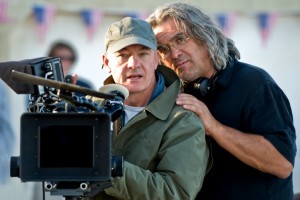
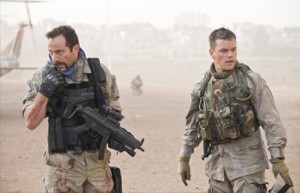


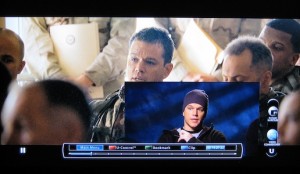
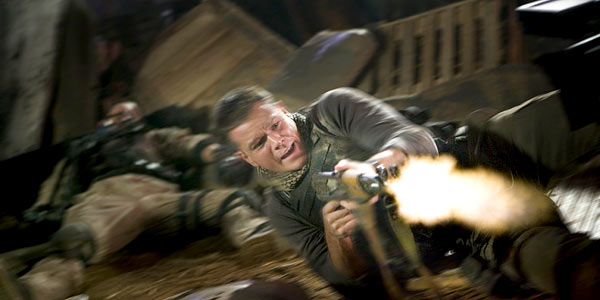












[…] Blu-ray Review: Green ZoneHD-ReportOne flyover in particular uses lens flare in a way that just made me wanna weep it was so gracefully done… and that looked terrific on Blu-ray. …and more » […]
I throughly enjoy your insights and critiques on Blu-ray movies. I find them to be spot on. I enjoyed this film, and after reading your recommendation, went back and watched again…through your eyes..so to speak, and I agree with you. Keep up the good work.